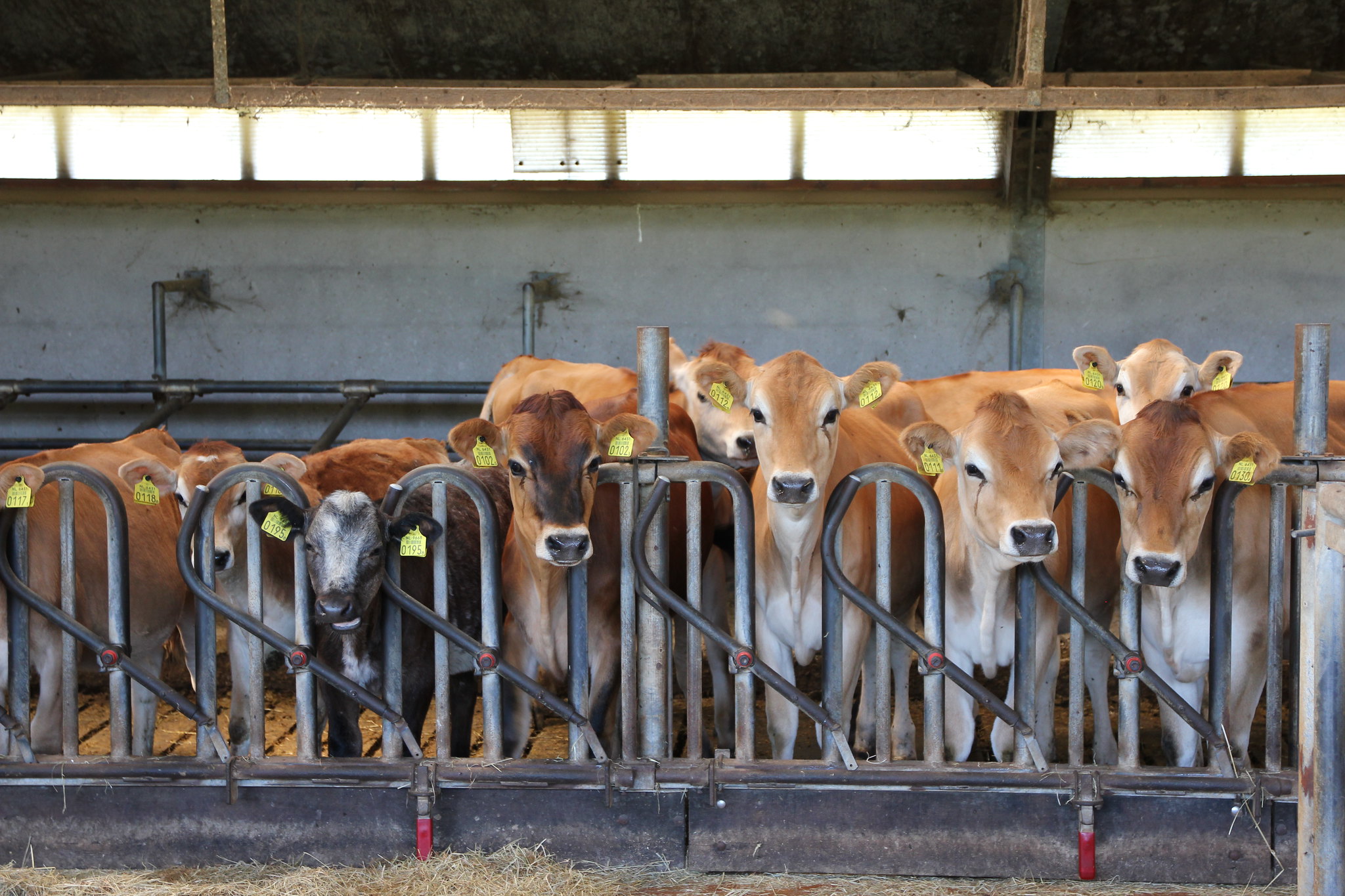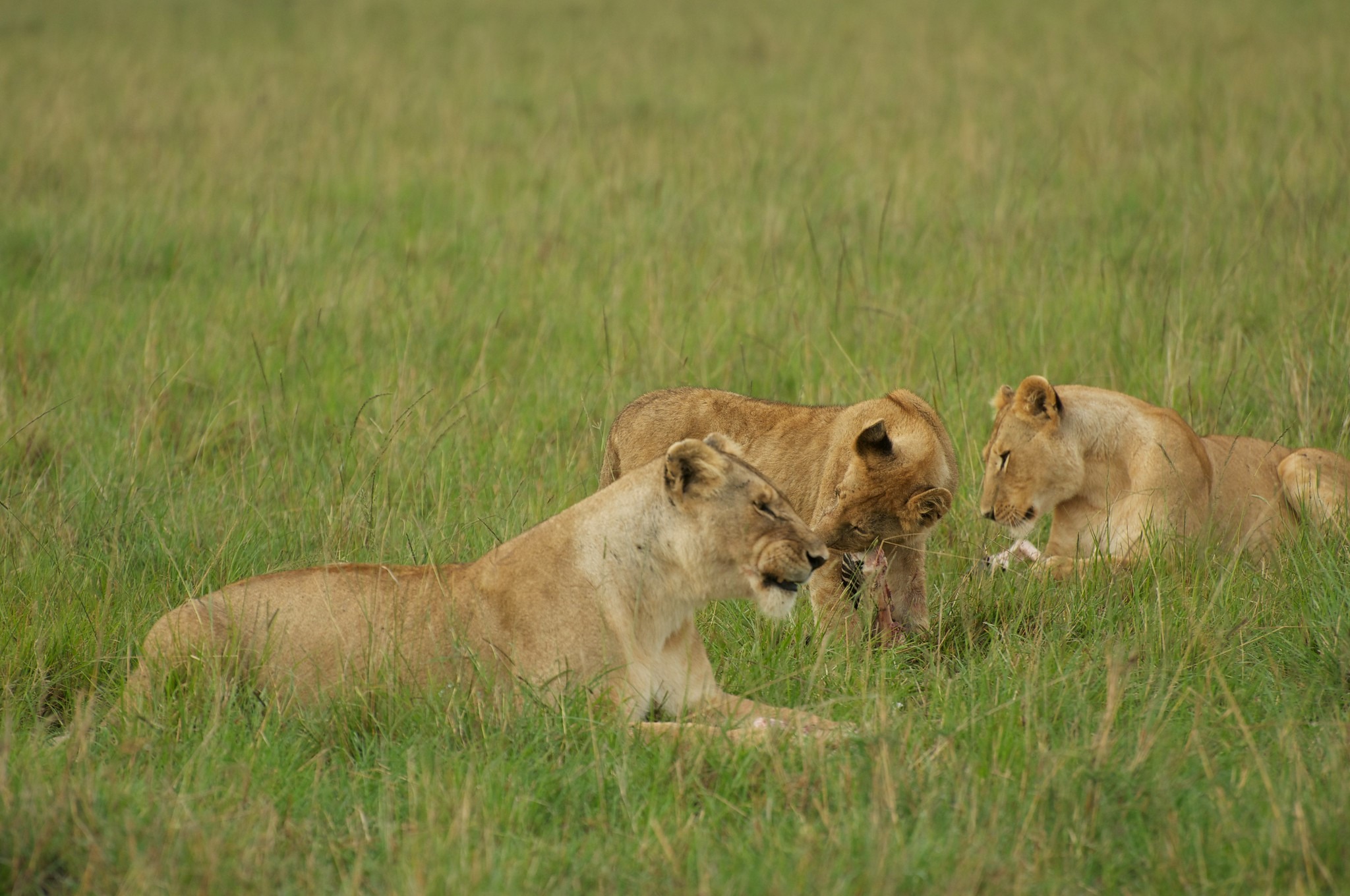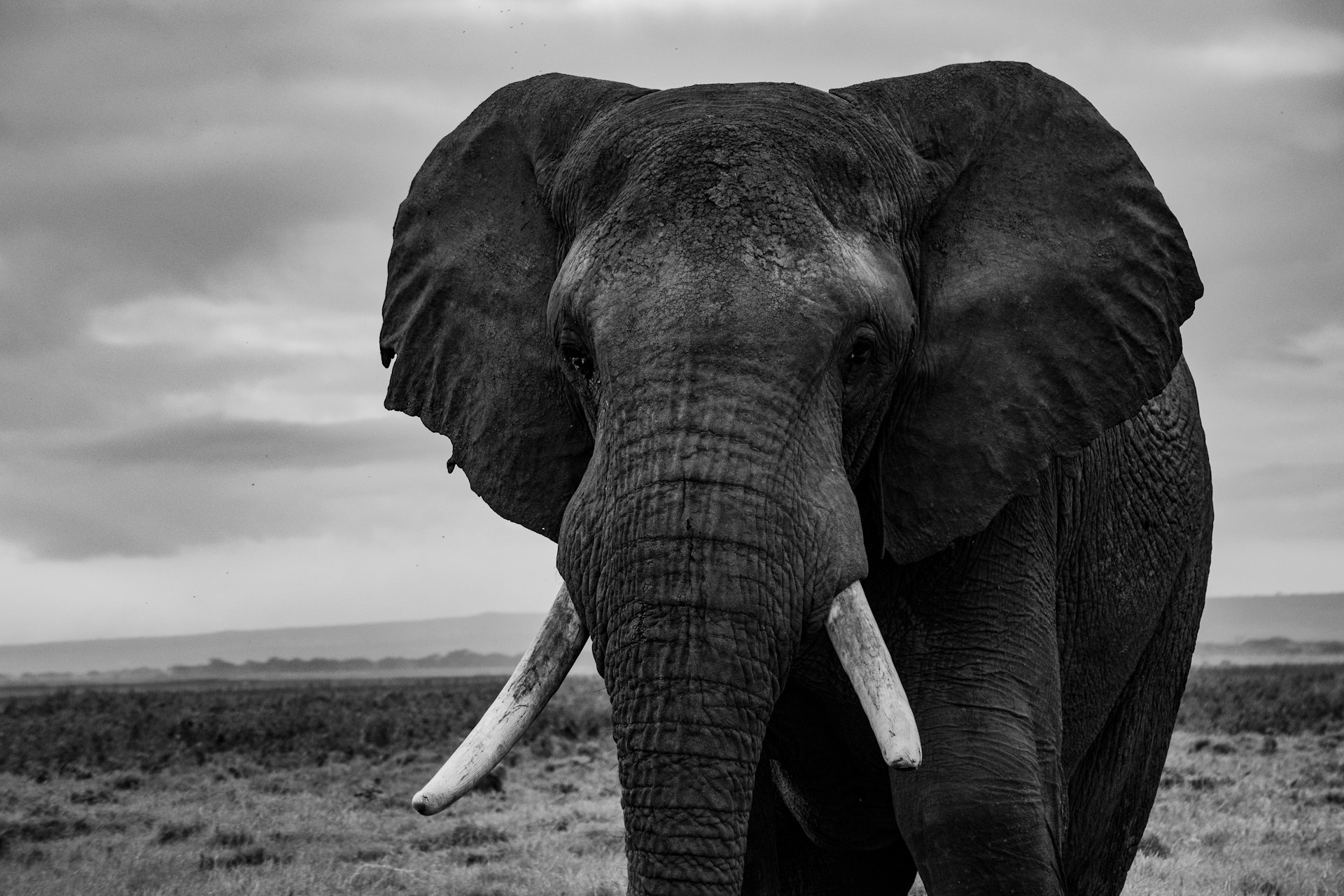The Value of a Life

By Dustin J. DiPaulo
Staff Writer
6/6/2019

Picture Credit: Theo Stikkelman
Anthropocentrism is the often unconscious, implicit, and largely unchecked notion that human beings are at the center of the universe – the idea that we are God’s gift to Earth, that the sun ultimately sets and rises for us; that other animals exist primarily to serve or sustain us; that the rest of the natural world would be meaningless if we weren’t here to give it a name, to exploit its resources, and to build civilizations on top of it.
We are, of course, measurably superior to non-human animals in certain ways. When it comes to raw intellect, for example, even the human with the lowest IQ is probably significantly smarter than the most intelligent non-human animal on the planet. It is also fair to say that no other species matches us in technological advancement. For all our failings, mightier beasts may never have lived.
It is this very power, though, that makes us believe that human life is somehow more valuable than non-human life. We tend to fall into the tribalistic Darwinian mindset of believing that human life is worth more, because we are, in many ways, superior. But is power or supremacy really a good way to judge the value of a life? Do the meek not also deserve equal moral consideration? Few people would say, for example, that it is acceptable for a brilliant astrophysicist to punch an innocent fool in the face just because the fool is less intelligent. Yet, many humans deem it acceptable to lay waste to entire ecosystems or kill certain animals for sport, profit, or taste. Superiority seems an insufficient metric to measure the value of a life. What else, then, might we consider?
What traits, characteristics, or behavioral patterns, in other words, might we cite as being the most fundamental to an existence worthy of moral consideration? Furthermore, do homo sapiens appear to demonstrate any of these things in significantly elevated ways to actually justify the notion that we’re more valuable than non-human animals?
What traits, characteristics, or behavioral patterns might we cite as being the most fundamental to an existence worthy of moral consideration?
We must identify common ground, shared and constant variables across all species, against which value can be measured. Based on what, exactly, can we say that one life is more or less valuable than another? Could it be social or cultural complexity? Intelligence? A certain level of sentience?
Perhaps the value of a life can be measured against a being’s ability to behave rationally. Rationality is, after all, the distinguishing characteristic that Aristotle pointed to as separating humans from beasts. “Man is the rational animal,” he famously proclaimed. Plato, too, championed rationality as the most valuable characteristic, placing it at the top of a hierarchy of desirable characteristics that he called “the tripartite soul.” The rational state of mind, for Plato, was followed (in order of desirability), by the spirited or emotional state, and then the appetitive or physical state. Is the ability to reason, then, a good gauge of the value of a life? And if so, is it unique to humans, giving their lives greater value?
The ability to make an informed decision or problem-solve based on experience seems to be in direct opposition to the alternative – to commit an action based solely on mindless reflex or instinct. The ability to operate from a place of logic or reason seems to imply a certain intelligence, sure; but, more importantly, it seems to suggest a certain level of agency and subjectivity – to elevate a living thing from the status of an object (like a tree that grows and undergoes photosynthesis without any say in the matter) to the status of a subject (i.e. a human, able to learn from his mistakes and willfully make better-informed decisions moving forward).
It seems difficult to imagine a convincing argument for the life of a tree, for instance, having more value than a human life, so perhaps there is something to the claim that rationality-subjectivity is what gives life value. But is the ability to reason a uniquely human characteristic? For a long time, the assumption was that reasoning required language. That, in order to think logically and problem solve, an animal had to be able to meta-cognate – a process that is extremely difficult for us to imagine taking place without a complex language by which to conceptualize cognition in the first place.
However, many animals have demonstrated the ability to think and problem-solve in seemingly logical ways. Elephants can, for example, without trial and error, move large plastic cubes in order to access food that would otherwise be out of reach. In an article published in Philosophy and Phenomenological Research, Cameron Buckner, assistant professor of philosophy at the University of Houston, tells of how it was once common knowledge that lions in Africa did not see giraffes as viable prey. A giraffe’s legs are strong. They need to be, in order to support their massive and cumbersome bodies. Giraffes “have an enviable height from which to deliver skull‐crushing kicks to any lioness which gets too close,” Buckner writes, “However, a population of lions in South Africa’s Selous Game Reserve have learned that if giraffes are encountered in a sandy river bed — where their hooves can get stuck, causing them to trip — then the lioness can outmaneuver a giraffe’s attempts to kick and go in for the kill.

Picture Credit: John Haxby
“In short,” Buckner says, “these lions have learned from their individual experience to flexibly interpret an ambiguous cue — that a particular configuration of giraffe appearances is deadly in one context but can be safely pursued as prey in another. Other lions without this experience would not pursue these giraffes as viable prey, even if they were encountered on the sandy riverbed. The strategy, moreover, appears to be picked up by the young when they begin to engage in hunts with the pride. This community of lions has come to see giraffes in a way that others have not, and as a result act more successfully.”
The fact that this particular pride of lions can rationally strategize based on their unique experiences seems to point toward a fascinating level of agency and subjectivity – in this case coming close to what one could call the establishment of cultural knowledge that’s unique to this pride and passed down through generations. Examples of non-human animals reasoning and problem-solving in this way are not specific to elephants and lions either. Dolphins, ravens, and chimpanzees, among a wide variety of other species, have exhibited similarly rational behaviors. So, perhaps saying that man is the rational animal is not quite in step with modern science. Aristotle, it turns out, was wrong.
If rationality, then, is not a uniquely human trait, perhaps it is our social complexity that sets us apart. We have, after all, developed extremely complex languages, means of expression, and cultures. We like to prop ourselves up as the civilized species, and we tend to assume that our definition of social advancement is the right one. That we are the most efficient, productive, or intricately social beings on the planet. This, of course, manifests in what we call societies – institutions, governments, economic systems – which impose the order required for many people to live together. And perhaps we are exceptional in this regard.
Other creatures, however, also have complexly structured societies, even if they aren’t necessarily aware of their profundity. Take bees for example. Although not all bees are social, honeybees and bumblebees have extremely advanced social structures. Their societies are eusocial – which means that you will find several generations of bees living in one nest at the same time; some members of the society will show high levels of cooperation, caring for the offspring of others if necessary; and a clear, hierarchical division of labor exists in which a queen takes on the majority of the hive’s reproduction and female workers procreate very little, if at all. Although this hivemind monarchy may not sound like the most desirable society under which to live, there is no denying its complexity. And, come to think of it, it’s not entirely unlike many human social structures, some of which are still in place today.

Many mammals, too, show signs of high social complexity. Elephants, for example, have been shown to possess uniquely individualistic personality traits on par with humans. Based on research conducted by the Amboseli Elephant Research Project (AERP) and others, elephants seem to have extremely diverse individual personalities. There are introverts and extroverts; some elephants are more active or aggressive than others; some are apprehensive, whereas others demonstrate an abundance of confidence; some seem to have higher levels of curiosity; others are eccentric; some even show remarkable tendencies toward deference. Interestingly enough, like bees, elephants also have matriarchal social structures, and an elephant’s relationship with the matriarch has even been shown to affect its psychological development, reverberating into the ways in which it interacts with others.
In addition to elephants and bees, one of the smartest species on the planet, bottlenose dolphins, also possess impressive social mechanisms, including intricate social networks and complex systems of language (as well as pod-specific dialects). Dolphins appear to maintain a few close relationships over long periods of time (as between mothers and calves, and between mates), but they also cultivate more casual relationships and acquaintanceships with members of the larger community, the pod. It is well documented that dolphins cooperate, often in pods of hundreds, when it’s time to hunt, ingeniously strategizing together to herd prey, and distributing the spoils of the hunt in equal shares. The fact that dolphins have intricate aural languages composed of clicks and whistles is also well documented.
Dolphins have also been recorded having what sounds like conversations, and it is understood that bottlenose dolphins refer to one another by signature identifiers, the same way we refer to each other by our names. Scientists still do not fully understand the language of dolphins, but according to Bloomberg, Swedish tech startup Gavagai AB, is working with researchers from the Stockholm-based KTH Royal Institute of Technology to try and understand the language of dolphins by 2021. Using AI-powered language analysis software, they intend to create something of a comprehensive dolphin dictionary. Furthermore, as bottlenose dolphins have already indicated the ability to understand complete sentences, the researchers’ other (much loftier) goal is to make it so that humans and dolphins can actually converse, presumably through an AI translator. Even though the language of dolphins may be the first non-human language that we acquire, dolphins are far from the only non-human animals on the planet that communicate in this way. It goes to show that the fact that we don’t yet understand something doesn’t mean it doesn’t exist.

People often make the distinction between “basic” and “complex” emotions. The six “basic” emotions are anger, fear, disgust, happiness, sadness, and surprise. “Complex emotions,” on the other hand, span a wide range of possibilities like jealousy, sympathy, contempt, love, hope, and basically anything else that’s felt but not so easily defined. Echoing Plato’s paradigm of the tripartite soul, for hundreds of years it was widely believed that basic emotions were animalistic, and complex emotions belonged uniquely to humans. But there’s plenty of evidence to suggest that all vertebrates are capable of emoting in equally complex ways.
Dogs are wells of complex emotion. It’s generally accepted that dogs feel profound kinship with and loyalty to their masters (hence the old cliché of them being our best friends), but science backs this up too. We now know that dogs possess the hormone, oxytocin, which, neurochemically speaking, is involved in producing feelings of love and affection for others. But even newer studies have suggested that dogs experience plenty of other complex emotions as well, like jealousy and empathy.

Elephants, too, in addition to being very social creatures, possess extremely high levels of emotional depth. Observers from the AERP have documented the ways in which social and familial bonds are reinforced through physical gestures. Elephants will, for example, rest against one another while asleep or reach out and touch each other’s faces, which suggests they experience love or affection. Elephants express excitement, yet another complex emotion, upon being reunited with their herd after being separated for some time: they greet each other joyously – with flapping ears, touching trunks, tender caresses, all the while with what appears to be a smile stretching from ear to ear. “You can easily see what excited elephants look like,” said Dr Vicky Fishlock of the AERP. “[T]hey signal how they feel with their whole bodies, from the tip of their trunk down to the tip of their tail.”
Elephants have also demonstrated an incredible capacity for and tendency toward empathy, arguably one of the most complex emotions – one that humans seem to struggle with considerably. Elephants have been known to go to great lengths to help or save people from harm. According to award-winning environmental author, Carl Safina, in an interview with National Geographic:
“There are documented stories of elephants finding people who were lost. In one case, an old woman who couldn’t see well, got lost and was found the next day with elephants guarding her. They had encased her in sort of a cage of branches to protect her from hyenas. That seems extraordinary to us, but it comes naturally to elephants.”

He goes on to give another example of non-human empathy. Humpback whales and dolphins, too, are famous for exhibiting signs of empathy through acts of heroism. There are documented cases, for example, of humpback whales rescuing seals from killer whales on the hunt by scooping the seals onto their backs and tossing them out of the water to safety. And there have been many documented instances in which dolphins have saved people, such as in 2004 and 2007 when pods protected surfers by encircling them and intimidating aggressive great white sharks away.
Emotional or psychological complexity, then, is not a uniquely human trait. The same is true, as the logical lioness and socially conscious elephant demonstrated earlier, when it comes to rational thought and social complexity.
But maybe it’s a mistake to evaluate the worth of other animals according to how they measure up to humans, or a Platonic notion that there is a hierarchy to what a soul can desire. Maybe the question shouldn’t be “What makes other species valuable to us?“ but, instead, “What makes us valuable to other species?”
Maybe the question shouldn’t be “What makes other species valuable to us?“ but, instead, “What makes us valuable to other species?”
At the top of the food chain, we depend entirely on every link below us. If a human life truly was the most valuable life on the planet, wouldn’t it follow, then, that humanity would offer some immensely unrivaled level of value to the rest of the planet? Perhaps that is the real common ground we’ve been looking for all throughout this essay, that shared and constant variable across all species by which a life’s value can be most accurately measured: how much good it does for the very ground that makes all life possible in the first place.
And if that is the case, maybe the earth would be right to rid herself of us. To begin anew, a world we will never see. A world where thousands upon millions of years can quietly crawl by – where our cities can slowly crumble and be swallowed whole by grasslands, ripped in half by new and verdant forests, and cleansed by the risen tides of fitful seas – where mother nature can finally tend to her wounds in peace.
